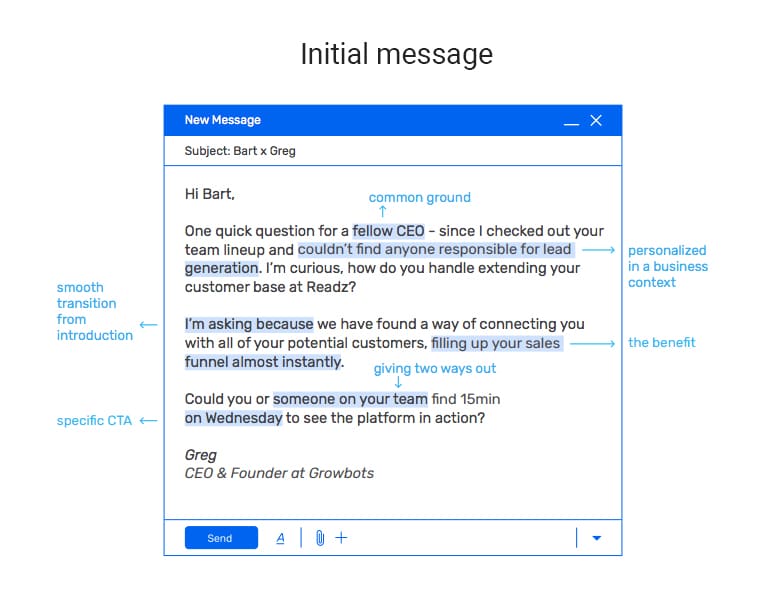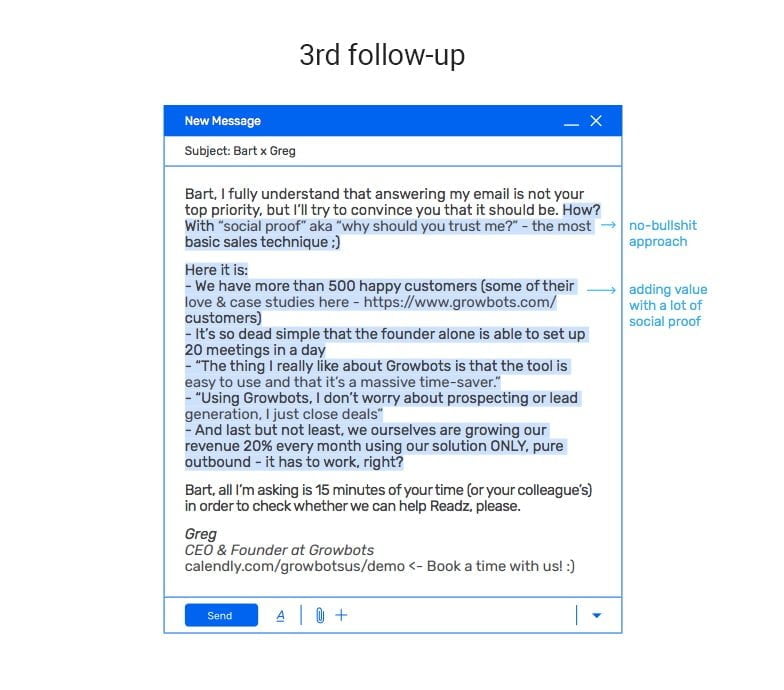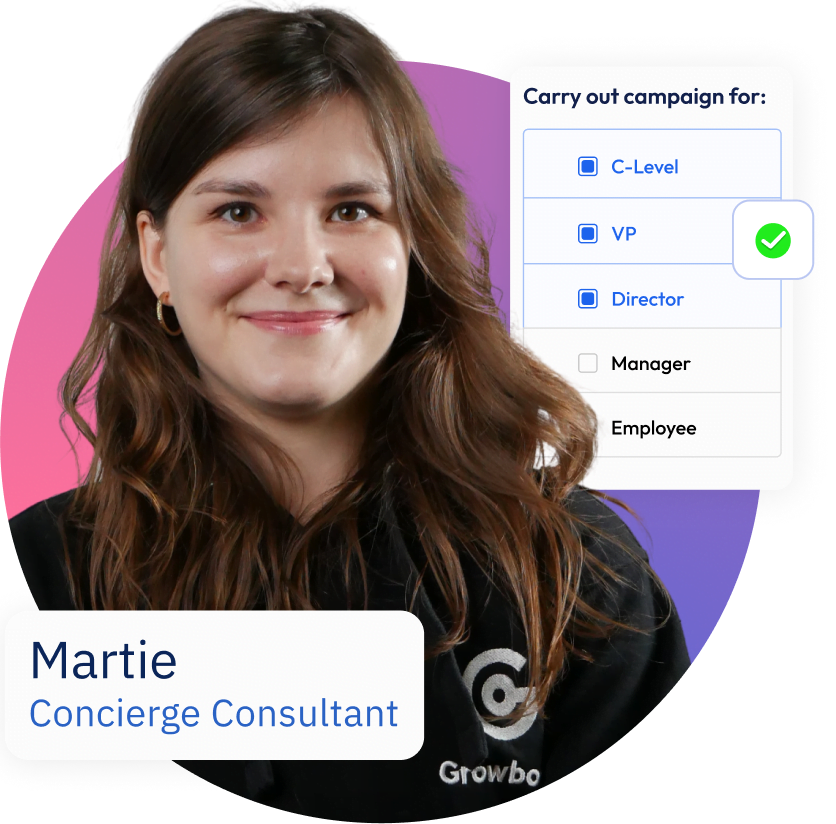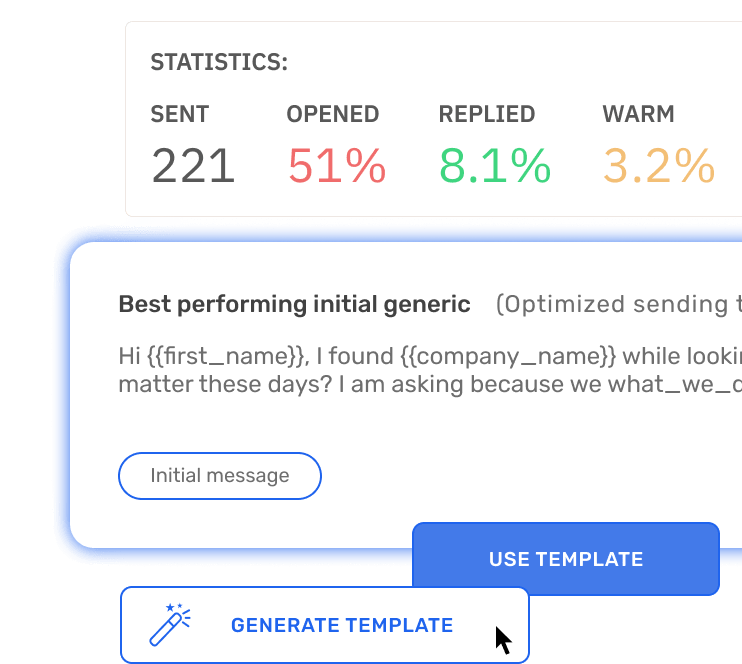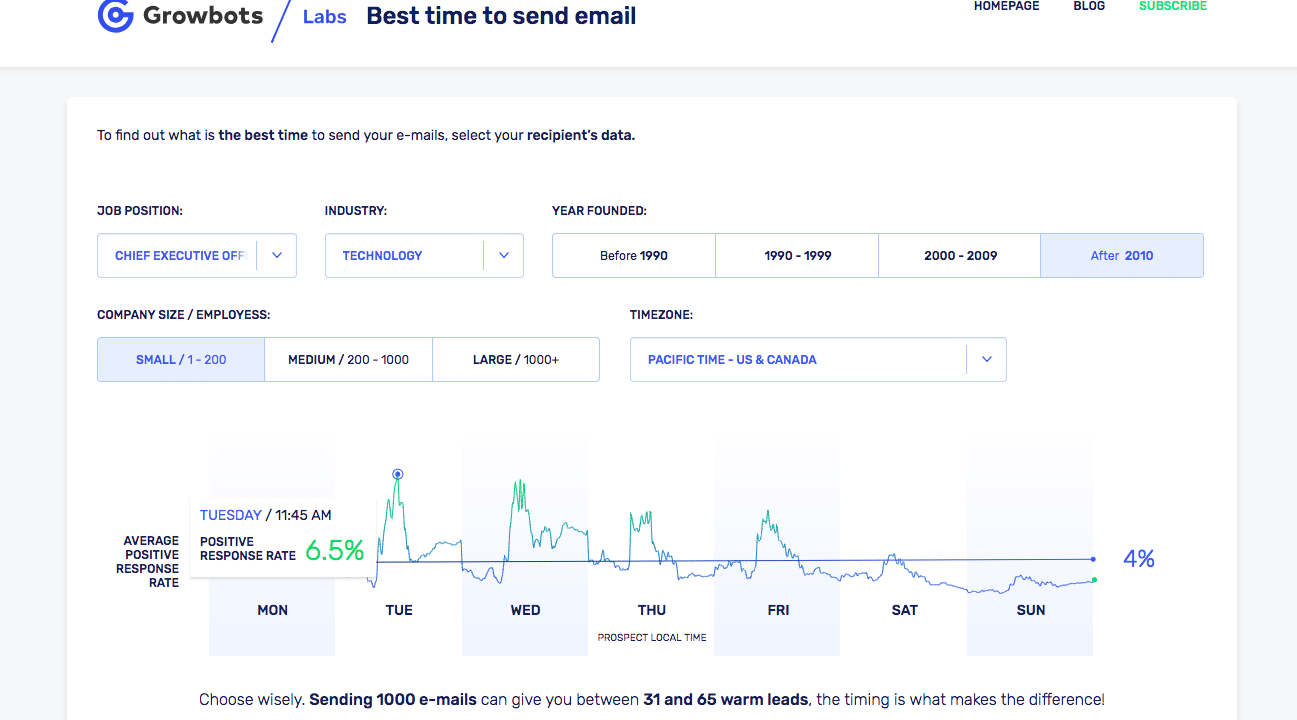One of the greatest minds of all time, Albert Einstein has said: “It’s not that I am so smart, I just stick with problems longer”.
Mr. Einstein, you were way too modest. And you were definitely right, persistence is key to success.
And speaking of persistence, what is the one thing that has a massive impact on the result of your outbound sales campaign?
If you’re thinking follow-ups then you’re right. Lack of a follow-up strategy clearly demonstrates a lack of persistence.
And 44% of salespeople give up after the first follow up… if you’re one of them, then shame on you.
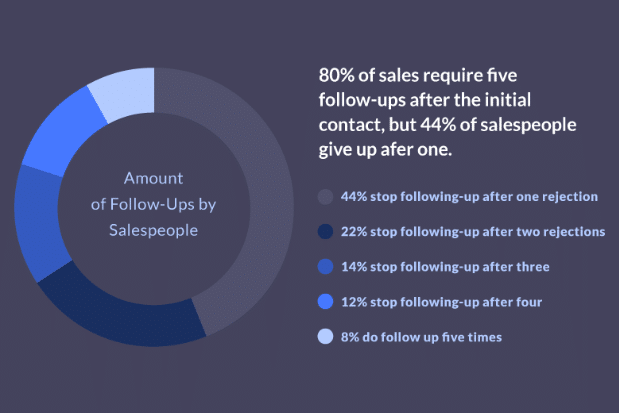
Image source: PropellerCrm
There are so many reasons why your prospect didn’t get back to you, wrong timing is probably the most common one.
If you don’t have a good follow-up strategy in place, then you’re missing out on a lot of opportunities.
Today we’re going to talk about how to create an email follow-up strategy that works.
How to create an email follow-up strategy that works?
What is the purpose of a follow-up?
An email follow up-strategy that works has two goals:
- to remind your prospect about your product or service (without being excessively pushy)
- to continuously add value to your offer
How often should we send email follow-ups and how many messages to include?
Persistence is key to creating an email follow-up strategy that works but don’t overdo it unless you want to annoy your prospects.
They’re busy people, and reading your email is probably not on their priority list, so give them time to familiarize themselves with it.
Here’s an email follow-up strategy that we use at Growbots:
We schedule our first follow up 24 hours after sending the initial message. We call it the “oh I forgot to mention” trick. It includes a special offer and looks more or less like this:
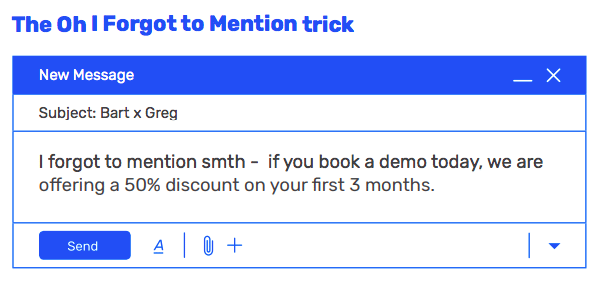
It makes us look more human. In the past, we used to send it within an hour from sending the initial message but we realized it didn’t act as a follow up (as we sent it too soon) so we decided to change the sending time.
It works great, as it introduces the element of surprise and encourages people to schedule demos.
We then send 4 more follow-ups, 1 per week. We assume that if the prospect didn’t get back to us, then it probably means they didn’t have the time to read our email. Which means we have to give them more time to process the information.
Why do we stick to 4 follow-ups only? Because we figured it’s better to stop the campaign for 1-2 months, give our prospects some breathing space and then include them in a new campaign which again has 3-4 follow-ups.
By sending our follow-ups less frequently we don’t lose anything, the effectiveness of our campaign doesn’t decrease quite the opposite actually.
If you send email follow-ups too often, then all you do is annoy your prospects.
This follow-up strategy gives us much more warm leads, so we highly recommend trying it out.
Reach More with Less Effort
Connect with Potential Clients at scale
-
AI message generator
-
E-mail verification
-
Multichannel sequences
-
A/B testing
Reach More with Less Effort
Connect with Potential Clients at scale
- AI message generator
- E-mail verification
- Multichannel sequences
- A/B testing
Follow up timing
I am sure you would love to know what time you should send your email follow-ups at to get the best response rate. And I am about to tell you that it depends… on many aspects:
- Your prospect’s job position
- The industry they work in
- Their company size
See there are many variables you have to consider, which is why we have created the email time optimizer. Use it to find out the best time to send your emails. You’re welcome!
What should an email follow-up include?
To create an email follow-up strategy that works you have to ensure that each follow-up email adds value for the recipient. We use a mixture of long and short follow up messages.
Use long follow-ups to provide supporting evidence, like social proof (a case study, for example).
Send short follow-ups to check whether your prospect read your message. Remember not to include too much information as it will overwhelm your prospect.
Our short follow-ups usually include a P.S with a link to our ebook, blog post or something else which brings value.
Make sure all your follow-ups are kept in the same message thread.
They have to create a compelling story, keep adding new information instead of saying the same thing over and over again.
Is there anything you shouldn’t use in your follow-up strategy?
Of course, there is! Please avoid sending “quick reminders” you know what I mean…
- Hey, I want to stay on top of your mailbox
- Just a quick follow-up on my previous email
- Or I wanted to make sure you received my last email
This is a commonly used strategy, and it’s crap. It adds no value and I am sure the only thing it really does is makes your prospects really, really angry. So please don’t do it.
Automate your follow-ups
To create an email follow-up strategy that works you need to monitor your results. This will require access to statistics which means you’ll have to use email automation tools.
And there are plenty to choose from. If you use Growbots, you won’t have to worry about scheduling your follow-ups as they will be scheduled automatically, and will reach your prospects at the right time.
Also if your prospect replies, any further communication will be stopped.
Growbots will provide you with detailed statistics, so you can check which email sequences performed best, and reuse them in your future campaigns.
That’s all, folks.
As a bonus, we are including our highly converting sequence. Make a good use of it, and let us know if it worked for you.
